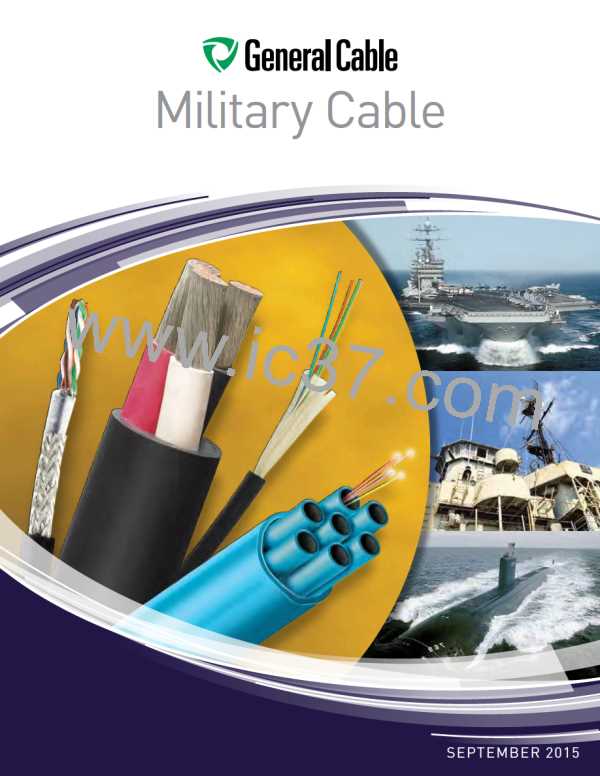Shore2Ship™ THOF-E
Shore-to-Ship Power Cable for Cold Ironing
With global warming and concerns for environmental degradation, new maritime regulations across the globe are
calling for Cold Ironing − and General Cable is answering the call.
When a ship is left running at berth to maintain essential services, emissions can be equivalent to up to 400 cars on the
road per day. That is why new at-berth regulations require container, passenger and cargo ships to shut off their engines
and use shore-based power or face fines.
Following early regulations for the prevention of vessel air pollution from the International Maritime Organization (IMO),
the California Environmental Protection Agency’s Air Resources Board enacted the “At-Berth Ocean-Going Vessels
Regulation” containing a clearly defined compliance. As of January 1, 2014, vessels docked in Long Beach, Los Angeles,
Oakland, San Diego, San Francisco and Hueneme will be required to shut off their engines and use shore power for 50%
of their visits. That compliance increases to 80% by 2020. From New York to Japan, Hong Kong and Rotterdam, ports
around the world are rapidly following suit.
Cold Ironing, also referred to as Shore-to-Ship Power, is the preferred solution to these regulations. It provides vessels at
berth with an on-shore power source to maintain essential services while turning their engines off completely.
The cable and connectors used for cold ironing are highly specialized to withstand the severe environmental conditions of
this application — exposure to sea water and
direct sunlight, continuous motion, and the
repeated flexing of a portable power system—
among others.
General Cable’s Shore2Ship™ THOF-E cable
is designed with all of these challenges in
mind. In every market we serve, General Cable
is known as a leader in delivering solutions
that provide maximum performance, reliability
and service life. With a focus on innovation
and continuous improvement, General Cable
has applied its engineering expertise to the
development of Shore2Ship™ THOF-E cables
incorporating:
A physically tough jacket design to resist
degradation from abrasion and tear
A 2-layer Chlorinated Polyethylene (CPE)
jacket extruded under pressure to fill the
cable’s interstices for water resistance
Maximum flexibility to facilitate repeated
use without causing harm to the cable core
Photos feature cable on Cochran
Marine’s Cable Positioning Device,
used to serve shore power

 GENERAL [ GENERAL CABLE TECHNOLOGIES CORPORATION ]
GENERAL [ GENERAL CABLE TECHNOLOGIES CORPORATION ]